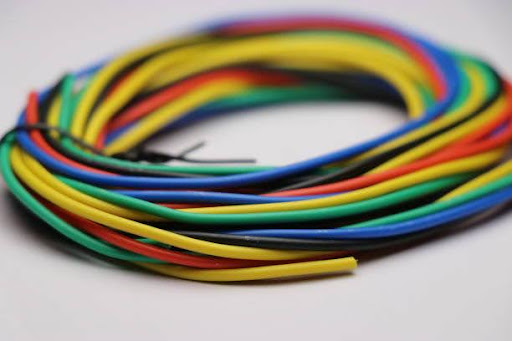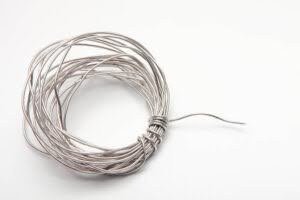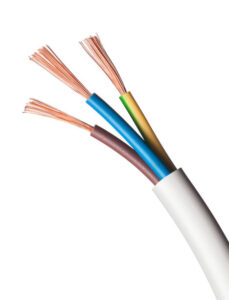Have you ever looked at electrical wires and noticed they come in different colors?
Each color has a special meaning, helping electricians work safely and efficiently. In this blog, we’ll explore the top 10 colors used for electrical wires, explain what each one stands for, and share why it’s important.
Whether you’re curious about the wires in your home or want to learn some basics of electrical wiring, this guide will make it easy and interesting. Lets jump in to learn about the colorful forms of electrical wires!
Why are Electrical Wires Different Colors?

Electrical wires come in different colors to indicate their specific functions within the electrical system, which enhances safety and efficiency during installation and maintenance. Black wires are primarily used to deliver power to devices and appliances and are always live, meaning they carry electricity at all times.
It’s crucial to handle these with care. Red wires also carry power and are used in areas requiring additional electricity, or where multiple wires perform different functions, ensuring everything operates correctly without confusion.
Blue and yellow wires have specific roles too. Blue wires are often involved in controlling lights from various locations, working alongside black and red wires in complex setups like three-way switches. Yellow wires connect switches to appliances such as lights and fans, activating these devices when the switch is flipped.
Neutral wires, which are white and gray, carry unused electricity back to the power source to complete the circuit, keeping the system safe and balanced. Lastly, green and bare copper wires serve as ground wires. These don’t carry electricity to power devices but are crucial for safety. They redirect any excess electricity away from the electrical fixtures and into the ground outside, preventing potential shocks or fires.
This color-coding system is vital as it allows electricians to quickly identify the purpose of each wire, facilitating faster, safer work and helping prevent electrical mishaps in homes and buildings.
Top 10 Colours of Electrical Wires
What Are Black Wires?

Black wires serve a crucial role in electrical systems, acting as hot wires. These wires carry electricity from the power source to various appliances and devices throughout your building. Black wires always live when the circuit is active, meaning they are energized and should be handled with caution. They’re commonly found in switches, outlets, and power supply lines, facilitating the flow of electricity where needed.
What Are Red Wires?

Red wires are also used to carry power and are often utilized in applications requiring higher voltage or for connecting hardwired smoke detectors and ceiling fans. Like black wires, red wires are considered hot and carry electricity through the circuit. They are vital in residential and commercial wiring systems for maintaining functionality and ensuring that power is adequately distributed to heavy-duty appliances.
What Are White Wires?

White wires are typically neutral in an electrical system, responsible for completing the electrical circuit by returning the current to the electrical panel and then to the ground. These wires help maintain a safe and stable electrical system by balancing the current that flows through your power outlets and devices. Despite being neutral, they can carry current when other paths are overloaded or unbalanced, so handling them with care is essential.
What Are Green Wires?
Green wires are ground wires, crucial for safety in electrical systems. They do not carry electricity to power devices but act as safety conduits, channeling any accidental or stray electrical currents safely into the earth. This grounding helps prevent potential electric shocks or fires, especially in fault conditions. Green wires must be properly connected to maintain safety and compliance with electrical codes.
What Are Blue Wires?

Blue wires are used as hot wires in your home’s electrical system, typically seen in configurations like three-way or four-way switches. These setups are common in controlling lighting from multiple locations, such as in large rooms or across hallways. Blue wires are always energized, so handling them requires caution to maintain safety.
What Are Yellow Wires?

Yellow wires function primarily as switch legs within your electrical circuits, meaning they connect switches to essential appliances, lights, or ceiling fans. These wires are pivotal in controlling the power flow from the switch to the device, facilitating the operation of connected units and ensuring effective power distribution.
What Are Bare Copper Wires?

Bare copper wires are the safety backbone of your home’s electrical system. Serving as ground wires, they don’t carry power to appliances but safely direct accidental electrical discharges into the ground outside your home. This grounding process is crucial for preventing electric shocks or fires, enhancing overall electrical safety.
What Are Grey Wires?

Grey wires typically serve as neutral conductors in electrical systems, comparable in function to white wires. They handle the return of electricity from appliances back to the electrical panel, ensuring excess power is safely grounded. This neutral path is essential for maintaining electrical balance and efficiency within your home.
What Are Brown Wires?

Brown wires generally indicate hot wires in residential wiring, especially in circuits requiring higher voltage, such as for large appliances or specialized equipment. These wires are vital for delivering sufficient power to operate high-demand systems safely and efficiently.
What Are Orange Wires?

Orange wires are used in 220-volt installations, crucial for operating heavy appliances like water heaters, air conditioners, and dryers. They carry higher voltage necessary for the energy demands of these appliances, ensuring they operate safely and effectively within your home’s electrical infrastructure.
Bottom Line
Electrical problems can be confusing, but Ferezco Power System can help! We’re your San Antonio experts in generator repair and maintenance. So if your multimeter is raising questions, or your home’s electrical system needs a pro’s touch, give us a call today! We’ll keep your power on and your peace of mind intact.




